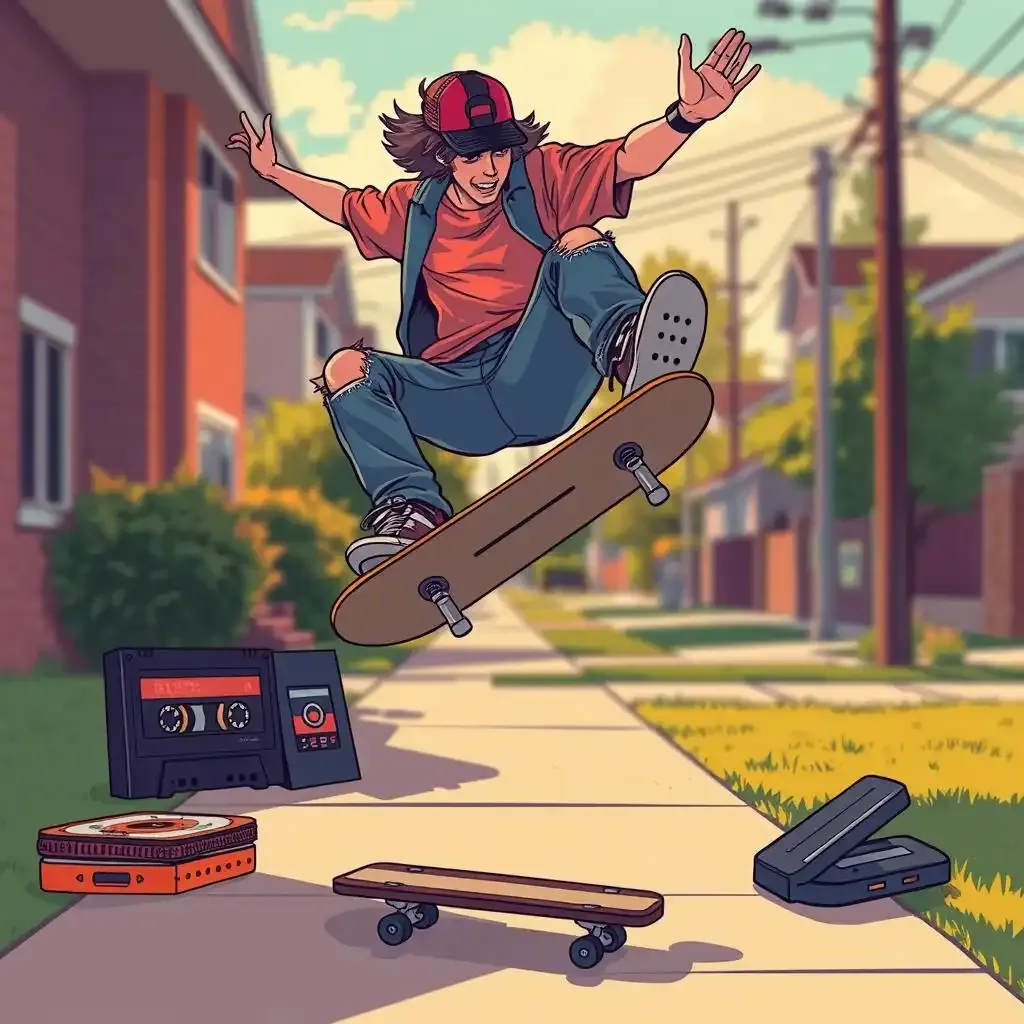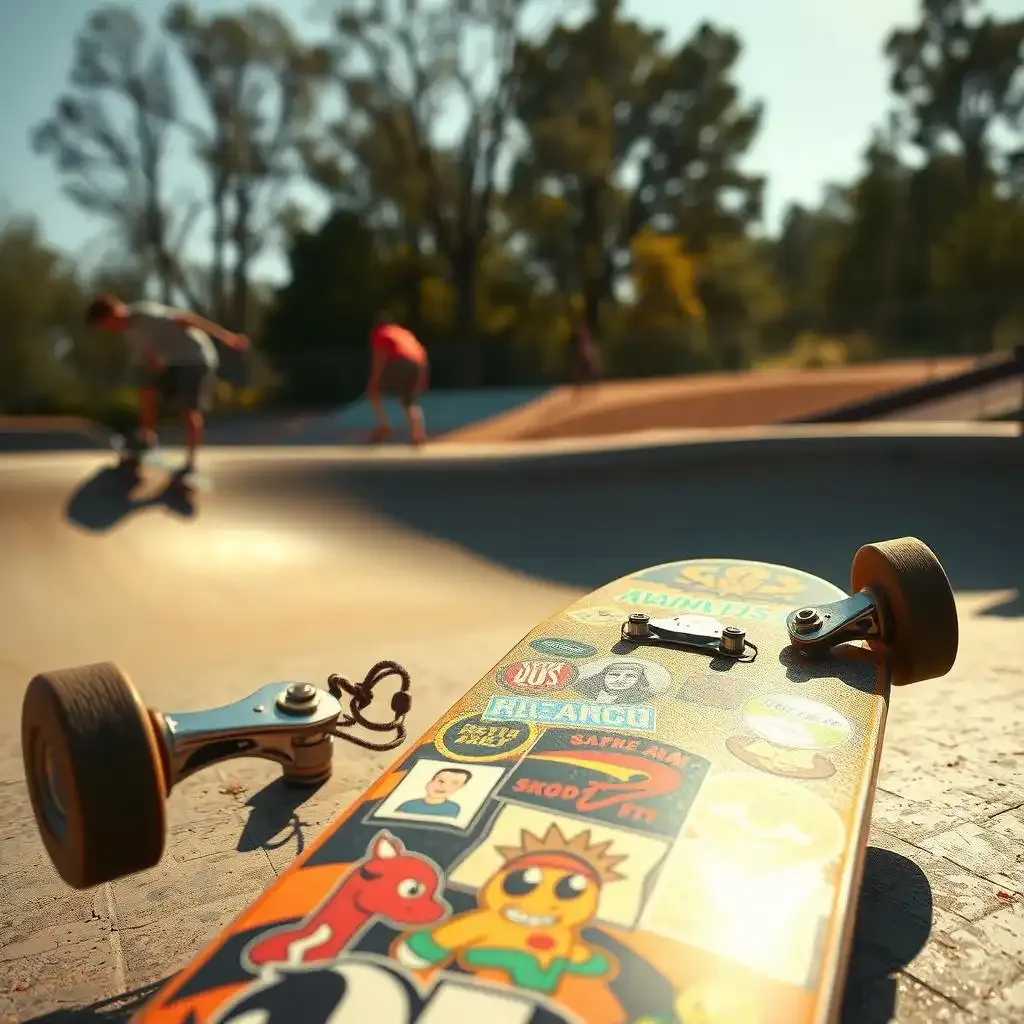Table of Contents
Remember the 90s? Grunge was blasting from every boombox, dial-up internet was a thing, and kids everywhere were trying to land an ollie. The question on everyone's mind, then and maybe even now, is: was skateboarding popular in the 90s? Spoiler alert: it was huge. This wasn't just a hobby; it was a cultural phenomenon. We'll explore how skateboards went from being toys to symbols of rebellious cool, focusing on the tricks that defined the phase and the unique culture that surrounded it. Finally, we'll take a look at the commercial peak and the subtle shift in popularity that followed. So grab your oversized hoodies and worn-out sneakers, because we're about to take a trip back to the concrete playgrounds of the 90s to answer the burning question: was skateboarding popular in the 90s?
Key Aspect | Details |
|---|---|
90s Popularity | Skateboarding experienced significant growth and became a mainstream trend. |
Technical Skateboarding | The early 90s saw a rise in focus on technical tricks like flip tricks and manuals. |
Skating Environment | Skaters utilized everyday urban elements like curbs, stairs, and rails. |
Cultural Impact | Skateboarding had a distinct "cool" factor and influenced youth culture. |
Sales Trend | After its 90s peak, skateboard sales saw a gradual decline. |
The Rise of 90s Skateboarding: Was Skateboarding Popular in the 90s?
The Rise Of 90s Skateboarding Was Skateboarding Popular In The 90s
Dude, you're diving into the 90s skateboarding scene? Awesome choice! It wasn't just a thing; it was like a tidal wave. Imagine every kid suddenly discovering they could fly, but instead of wings, they had four wheels and a piece of wood. That's kinda what the early 90s felt like when skateboarding exploded. Suddenly, every sidewalk was a potential skatepark, and every curb was begging for a grind.
I remember seeing skateboards everywhere. Not just in skateparks, but at school, in the streets, even in TV shows and movies. It was like this secret club that everyone wanted to join. You’d see kids trying to ollie over cracks in the pavement, their boards clattering like a runaway train. It wasn't always pretty – there were definitely some spectacular wipeouts – but that was part of the charm. It felt raw and real. Want to know more about the gear we used back then? Check out if skateboard trucks were universal.
What made it so popular? Well, for starters, it looked cool. There was a certain rebellious vibe to it, a kind of "we make our own rules" attitude. Plus, the tricks were mesmerizing. Watching someone nail a kickflip felt like witnessing magic. It wasn't just about rolling around; it was about pushing boundaries, learning new skills, and expressing yourself. It was like learning a new language, but with your feet.
And the best part? You didn't need a fancy team or a ton of equipment. Just a board and some pavement. It was accessible. Think of it like this: if basketball had a skateboard version, that was the 90s. Everyone could grab a board and give it a shot. Of course, some people wondered, are skateboards dangerous? Sure, you might scrape a knee or two, but that was part of the experience.
Technical Tricks and the Culture: Why Was Skateboarding Popular in the 90s?
Landing That Impossible Flip
Okay, so you're trying to figure out why everyone was suddenly glued to their skateboards in the 90s? A huge part of it was the tricks, man. It was like watching someone try to solve a really complicated puzzle, but the puzzle was moving and made of wood and wheels. Before the 90s, it was a lot of just, you know, rolling around. Then, bam! Guys started flipping their boards in the air, doing these crazy spins, and landing back on all four wheels. It was like skateboarding leveled up overnight. Think of it like this: before, it was just walking; suddenly, everyone was doing parkour. The ollie became the building block, and from there, it was a wild explosion of kickflips, heelflips, and all sorts of variations that sounded like a secret code. You'd spend hours just trying to get your board to do what you wanted, and when you finally landed that trick? Pure stoke. I remember trying to nail a simple kickflip for weeks, my board flying out from under me more times than I could count. Then one day, it just clicked. It felt like I'd unlocked a cheat code in a video game. Ever wondered if ? Well, back then, the risk was part of the fun.
More Than Just a Board
But it wasn't just about the tricks, though those were seriously rad. The culture around skateboarding in the 90s was something else entirely. It was like its own little universe, with its own language, its own style, and its own unspoken rules. Think about the clothes: baggy pants, oversized tees, and those beat-up skate shoes. It was a uniform, a way of saying, "I'm part of this." And the music! The soundtrack to every skate session was a mix of punk rock and early hip-hop, loud and full of energy. I remember heading down to the local skate spot after school, the air buzzing with the sound of wheels on concrete and the latest skate videos blasting from someone's boombox. It was a community, a place where you could be yourself, even if "yourself" was a clumsy kid who spent more time falling than landing tricks. We weren't all trying to become the next Tony Hawk, but we were all connected by this shared passion for rolling around on a piece of wood. Speaking of gear, anyone ever wonder if helmets are multi-sport? We probably should have back then.
From Streets to Sales: The Peak and Decline of Was Skateboarding Popular in the 90s
From Streets To Sales The Peak And Decline Of Was Skateboarding Popular In The 90s
Riding the Wave of Popularity
Dude, let me tell you, the mid-90s were like the Super Bowl for skateboarding companies. Suddenly, everyone and their grandma wanted a piece of the action. Remember those skate shops popping up everywhere? It felt like overnight, you could walk into a store overflowing with decks featuring the gnarliest graphics, shoes with more padding than a linebacker's, and enough wheels to outfit a small army. It wasn't just about the local skate shop anymore, though those were still the heart and soul. Big brands saw the dollar signs doing kickflips and jumped on the bandwagon. It was like watching a small indie band suddenly sell out stadiums. Take skate shoes, for example. Before, it was just whatever sneakers you had lying around. Then, companies started designing shoes specifically for skating, with reinforced stitching to handle all those ollies and kickflips. It was a smart move, considering how quickly we used to shred through regular shoes. Ever wonder if those skate shoes are good for anything else? Check out if skate shoes are good for walking.
The Inevitable Kickflip Off the Peak
But like any good halfpipe run, what goes up must eventually come down, or at least level out a bit. As the 90s started to wind down, the crazy hype around skateboarding began to chill. It wasn't that people stopped skating, not by a long shot. It was more like the mainstream spotlight moved on to the next shiny thing. Think of it like this: skateboarding was the super popular kid in high school, and then college started, and everyone found their own niche. Sales weren't as bonkers as they were during the peak, and some of those fly-by-night skate companies that popped up quicker than a poorly landed primo started to disappear. The skaters who were in it for the long haul, the ones who genuinely loved the feeling of rolling and grinding, they stuck around. It became less about following a trend and more about a genuine passion. Even though the crazy commercial peak mellowed out, the core of skateboarding culture remained strong. And hey, at least the skateparks weren't quite as crowded! Speaking of the culture, did you know skateboarding came from surfing? It's a cool bit of history.
Rolling into the Sunset
The 90s were undeniably a golden stage for skateboarding. It carved its place into the cultural landscape, influencing fashion, music, and the very definition of "cool." While its mainstream dominance might have waned slightly since then, the impact of 90s skateboarding is still felt today. The spirit of innovation, the dedication to mastering those tricky flips, and the unique sense of community remain hallmarks of skateboarding culture. So, was skateboarding popular in the 90s? Absolutely. It wasn't just popular; it was defining.